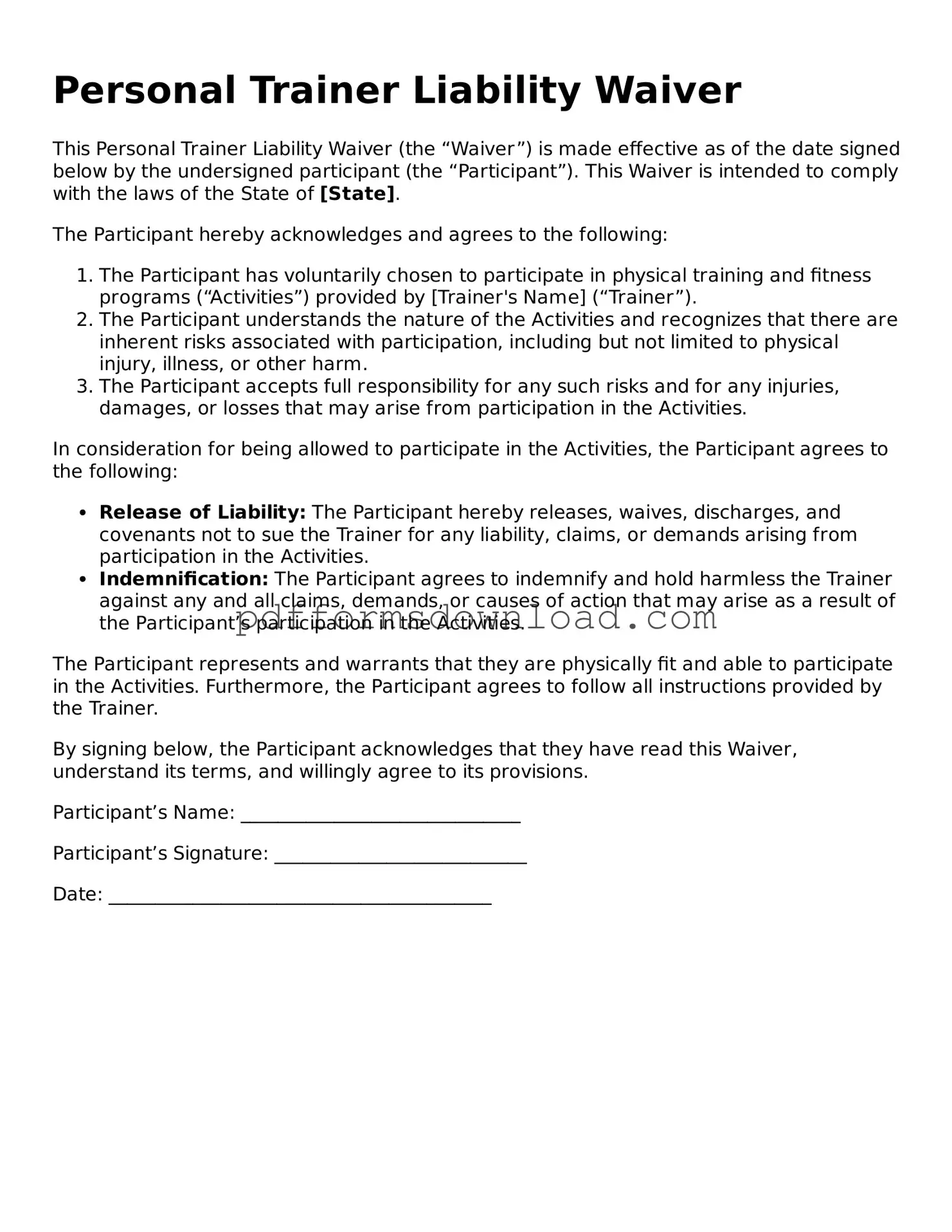What is a Personal Trainer Liability Waiver?
A Personal Trainer Liability Waiver is a legal document designed to protect personal trainers from liability in case of injuries or accidents that may occur during training sessions. By signing this waiver, clients acknowledge the risks associated with physical training and agree not to hold the trainer responsible for any injuries that may arise from their participation in fitness activities.
Why should I sign a Personal Trainer Liability Waiver?
Signing a waiver is a standard practice in the fitness industry. It helps ensure that you understand the inherent risks involved in physical training. By signing, you also confirm that you are participating voluntarily and that you accept responsibility for any potential injuries. This can provide peace of mind for both you and your trainer.
What does the waiver cover?
The waiver typically covers a range of activities associated with personal training, including but not limited to exercise routines, use of gym equipment, and participation in group classes. It may also address specific risks related to your health conditions or fitness levels, emphasizing that you are responsible for disclosing any relevant medical history.
Can I still file a claim if I sign the waiver?
While a signed waiver does limit your ability to file a claim for injuries sustained during training, it does not eliminate your right to seek compensation in every situation. If a trainer is found to be negligent or fails to provide a safe environment, you may still have grounds for a claim. It's essential to understand the specific terms of the waiver and how they apply to your situation.
Is the waiver legally binding?
In general, liability waivers are legally binding if they are properly drafted and signed. However, the enforceability can vary by state and specific circumstances. Courts may not uphold a waiver if it is deemed overly broad or if it does not clearly outline the risks involved. Always read the waiver carefully and consider seeking legal advice if you have concerns.
Do I need to have insurance as a personal trainer?
While a liability waiver can provide some protection, it is still advisable for personal trainers to carry liability insurance. This insurance can cover legal fees and settlements in case a client decides to pursue a claim despite signing the waiver. It adds an extra layer of security for both trainers and clients.
What if I have a pre-existing condition?
If you have a pre-existing condition, it’s crucial to disclose this information to your trainer before signing the waiver. Trainers need to be aware of any limitations or risks associated with your health to provide a safe training environment. The waiver may include a section where you acknowledge your condition and accept the associated risks.
Can I modify the waiver?
Modifying a liability waiver is generally not recommended. The terms are usually set to protect both the trainer and the client. If you feel that certain aspects of the waiver do not apply to you or are unfair, discuss your concerns with the trainer. They may be able to provide clarification or adjust the terms in a way that is acceptable to both parties.
What should I do if I have questions about the waiver?
If you have any questions or concerns about the Personal Trainer Liability Waiver, it’s best to discuss them with your trainer before signing. They can explain the document in detail and help you understand your rights and responsibilities. If you still have doubts, consider consulting a legal professional for further guidance.
